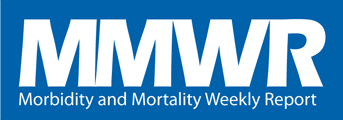MMWR News Synopsis for October 22, 2015
- Progress toward Poliomyelitis Eradication — Afghanistan, January 2014‒August 2015
- Progress Toward Global Eradication of Dracunculiasis, January 2014–June 2015
- Use of Serogroup B Meningococcal Vaccines in Adolescents and Young Adults: Recommendations of the Advisory Committee on Immunization Practices, 2015
Progress Toward Poliomyelitis Eradication — Afghanistan, January 2014‒August 2015
CDC Media Relations
404-639-3286
There is an urgent need to improve on the level of coordination and oversight of polio eradication activities, particularly with respect to supplementary immunization, in order to eliminate poliovirus transmission in Afghanistan. After having made significant progress towards the eradication of polio in 2013, Afghanistan experienced an increase in wild poliovirus transmission in 2014, with the number of reported polio cases doubling compared with the previous year. While there have been encouraging signs of reduced transmission in the traditional polio reservoirs of Helmand and Kandahar in the Southern Region in 2015, immunity gaps in the conflict-affected Farah Province of the Western Region and cross-border transmission from Pakistan into Nangarhar Province of the Eastern Region have accounted for a majority of polio cases reported this year. To address this problem, the government of Afghanistan should urgently establish emergency operation centers to improve oversight and coordination of polio eradication activities, including the planning and implementation of supplementary immunization activities.
Progress Toward Global Eradication of Dracunculiasis, January 2014–June 2015
CDC Media Relations
404-639-3286
With only 126 dracunculiasis cases in humans reported in 2014 (the lowest annual total ever) and only four disease-endemic countries remaining, the goal of eradicating Guinea worm disease is closer than ever. However, significant challenges remain that require attention, adaptation, and application. In 1986, the World Health Assembly called for the elimination of dracunculiasis (Guinea worm disease), a parasitic infection caused by Dracunculus medinensis. Since then, annual cases have declined from an estimated 3.5 million in 20 countries in 1986 to 126 in four countries (Chad, Ethiopia, Mali, and South Sudan) in 2014. During January–June 2015, only 8 cases were reported worldwide. Challenges remain: insecurity has weakened disease surveillance and program interventions in endemic areas of Mali, and Guinea worm infections in dogs in Chad outnumbered cases in humans several fold during January–June 2015. Interruption of disease transmission in these four countries will require national governments to provide their full attention and political support to their national eradication efforts. These are now the greatest challenges to global eradication.
Use of Serogroup B Meningococcal Vaccines in Adolescents and Young Adults: Recommendations of the Advisory Committee on Immunization Practices, 2015
CDC Media Relations
404-639-3286
A MenB vaccine series may be administered to adolescents and young adults 16 through 23 years old to provide short term protection against most strains of serogroup B meningococcal disease. The preferred age for MenB vaccination is 16 through 18 years. There are two serogroup B meningococcal (MenB) vaccines licensed in the United States and approved for use in people 10 through 25 years old. At its June 2015 meeting, the Advisory Committee on Immunization Practices (ACIP) recommended that adolescents and young adults 16 through 23 years old may be vaccinated with a MenB vaccine to provide short-term protection against most strains of serogroup B meningococcal disease. If parents are interested in having their child vaccinated with a MenB vaccine, they should talk to their child’s clinician. All adolescents should continue to get the quadrivalent meningococcal conjugate vaccine at 11 to 12 years old, and a booster dose at age 16 years.
Notes from the Field:
- Mycobacterium chelonaeEye Infections Associated with Humidifier Use in an Outpatient LASIK Clinic
QuickStats
- Percentage of Residential Care Communities Using Electronic Health Records (EHRs), by Number of Beds — National Study of Long-Term Care Providers, United States, 2014
###

